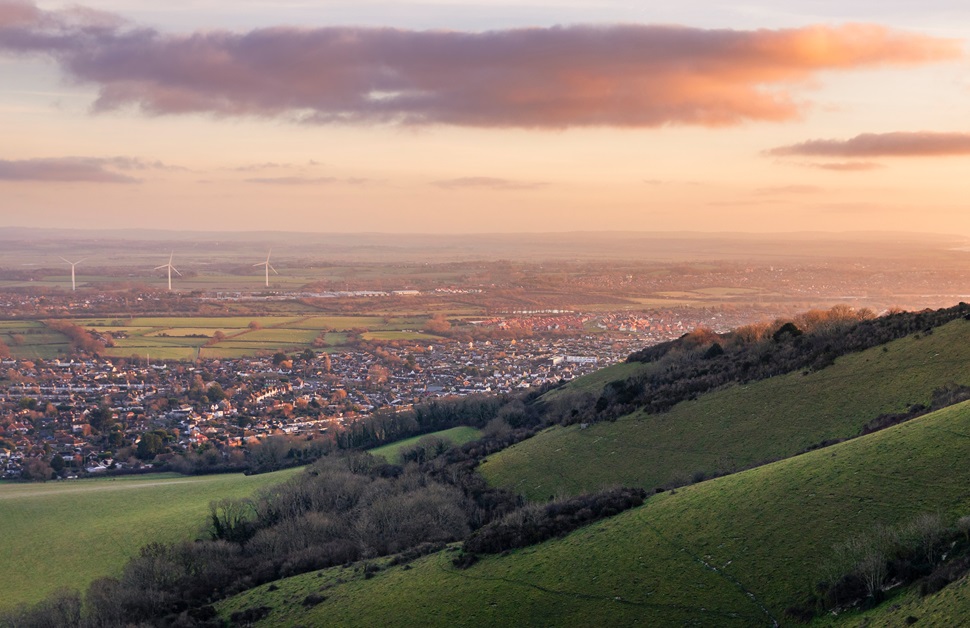Countless Wooded Areas and Trees Across the County
A massively rural county, East Sussex in South East England has numerous trees and wooded areas, particularly in the three large rural districts of Lewes, Rother and Wealden. Around 200,000 trees populate the roadsides of East Sussex alone, and while almost three-quarters of the population live in urban areas, the county is made up of woodland, coast and countryside market towns.
By population, the largest built-up areas in East Sussex are Eastbourne, Hastings, Bexhill-on-Sea, Seaford, Hailsham and Crowborough, with the biggest nearly housing as many as 100,000 occupants. The tree canopy cover in the county stood at 27% back in 2010, equating to 25 kilo hectares of tree cover, but losing five hectares of coverage in the 20 years that followed.
Urban tree planting has been used as a way of counteracting the loss in tree numbers over recent years. Several groups have campaigned for the addition of new trees, but East Sussex County Council’s scheme has seen the most progress, with the initiative leading to the planting of hundreds of new trees in Bexhill, Eastbourne and Seaford.
Until all the trees on a development site have been addressed and catered for, the planning project will not be able to continue and planning applications will hang in the balance. A more advisable option would be to organise a tree survey on the site and allow for a qualified tree surveyor to inspect all trees present before making appropriate next steps that will appease the local authority.

Restrictions Around Trees
Any potential risks to elements of value within the area fall under the jurisdiction of East Sussex County Council, extending to such things as existing trees. More specifically, consent is needed from the local council if any trees that are subject to active protection are likely to suffer damage as the result of development works or any other harmful exercise.
Common ways of defending trees are by placing them under a Tree Preservation Order (TPO) or within a conservation area. Each option is similar, except Tree Preservation Orders (TPOs) typically affect single trees that have been outlined by the local authorities, whereas conservation areas usually apply to all trees situated within a clearly set zone.
Nearby Local Councils
- East Sussex County Council
- Eastbourne Borough Council
- Hastings Borough Council
- Lewes District Council
- Rother District Council
- Wealden District Council
British Standard BS5837 Inspections
In preparation for any form of development on a site where trees are present, BS5837 tree surveys are suitable for ensuring tree health isn’t compromised and trees aren’t unnecessarily disrupted. Following a detailed grading system, each tree will be analysed using condition and value as deciding factors in the next steps between the options of retaining them, relocating them or destroying them.
Completing the BS5837 tree survey with as many retained trees as possible will be the arboriculturist‘s top priority, but if there are potential issues with the trees such as health and safety concerns or an entire lack of value, the tree consultant will opt to destroy them and compensate by planting new trees to replace them. Relocating trees is also an option if it isn’t possible to retain trees due to the unchangeable plans of the development, at which point, the affected trees will be safely moved elsewhere.
It is important to remember that a BS5837 tree survey isn’t designed to uncover wildlife habitats, map out tree surgery methods, assist mortgage lenders or identify wildlife habitats. The purpose of these types of tree surveys is to come away with a tree report that will explain the required tree works to your local council and give the local planning authority all the data needed to grant planning consent.
Talk to Us Today
Over many years, our team has conducted tree surveys for numerous clients in a wide selection of industries. Not only does that include BS5837 tree surveys, but also other assessments to suit different demands and requirements. For instance, if you need an Arboricultural Method Statement (AMS) or an Arboricultural Impact Assessment (AIA), our team can easily accommodate you.
Send us an email, call us directly or fill in an online quote form on our website, and we will be able to explain the tree survey cost based on your unique details. Widespread coverage makes it possible for a tree surveyor to attend to East Sussex and other parts of the country, ranging from neighbouring West Sussex to practically any location. After the tree surveys are complete, an arboricultural report will be sent to you to help you secure your planning application.